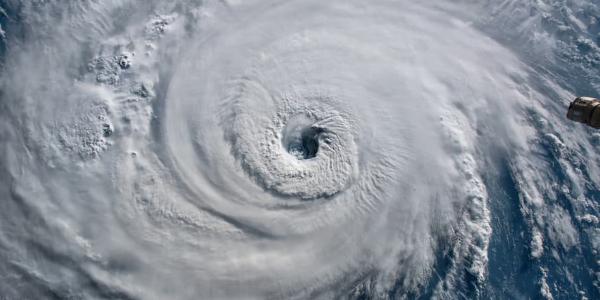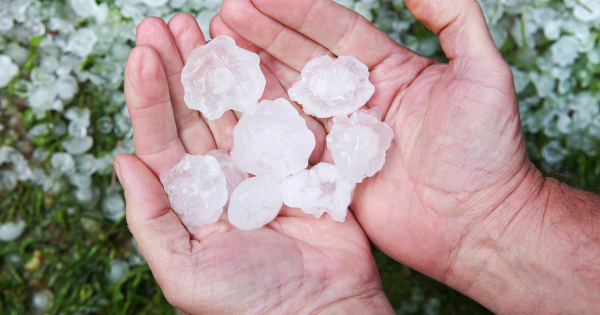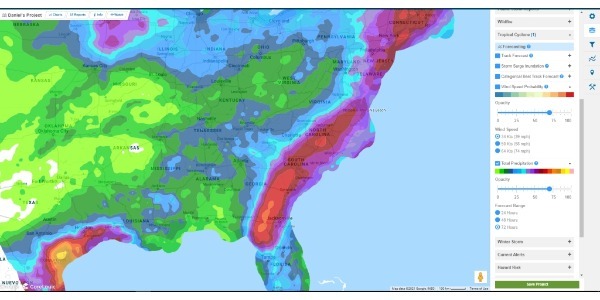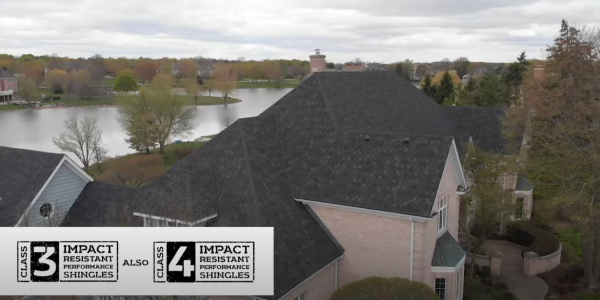How to Prepare as Hurricane Season Strikes

By All Points Tile and Slate.
In hurricane prone states, it is important to consider measures that can be taken to reinforce roofs and protect against potential damage.
Hurricane season is upon us, and it’s already proving to be dangerous and destructive as storms make landfall. Roofs that are inadequately prepared for such storms can be subjected to various damages from water, wind, mold or structural issues if not addressed quickly. While it’s impossible to prepare for every situation, there are a number of measures homeowners and business owners can take to ensure their roof is secure. With trends revealing an increase in hurricane winds in research done by the Environmental Protection Agency (EPA), it is never too late to ensure a hurricane resistant roof.
When is hurricane season in Florida?
The National Hurricane Center defines the official hurricane season for the Atlantic basin, encompassing the Atlantic Ocean, the Caribbean Sea, and the Gulf of Mexico, as spanning from June 1 to November 30. It is worth noting that the peak of the season typically transpires from mid-August to late October. Knowing these timeframes allows individuals to allocate sufficient time and resources to fortify their homes and properties against potential hurricane threats.
What kind of damage can hurricanes cause?
Hurricanes can cause a range of damaging effects, even for roofs that are structurally sound and securely attached to buildings. One significant challenge is the phenomenon of wind-driven rain, where extreme wind forces propel water horizontally, hitting the roof from the side instead of descending from above. Hurricanes can result in large amounts of water directed at homes for extended periods.
Designing materials and roofing systems that can effectively resist this force is difficult. Any small gaps in flashing, missing shingles or roof holes can allow water to penetrate the home. Additionally, roofing materials caught by the wind can be torn off, initiating a chain reaction that strips away shingles, tiles and underlayment, potentially leading to major leaks as the exposed decking becomes saturated.
Wind speeds during hurricanes can range from 74 mph to over 157 mph, depending on the storm’s strength. In some cases, tornadoes may also accompany hurricanes, resulting in flying debris that can cause impact damage or even detach the house from its foundation. Wind can wreak havoc on roofs by blowing off roof materials and accessories, throwing items onto the roof, and ripping mounted hardware out of the roof.
Water damage is another significant concern associated with hurricanes. Where there are strong winds, water and hail will likely follow closely. The wind damages the roof system, creating vulnerable areas that allow water to enter the building. This can lead to issues with building insulation, structural integrity and damage to property inside. Water damage from hurricanes may not be immediately evident, and it can lead to mold growth in unexpected places. Mold can pose health risks to occupants and cause long-term lung damage. Moreover, it can degrade the home or business’s structural materials, including the roof, jeopardizing the overall stability of the building.
When should contractors and homeowners start preparing?
It is advisable to commence preparations for hurricane season in late April or early May. However, it’s important to note that there have been instances where hurricanes occur before the official season begins. Stay vigilant and keep a close watch on weather reports to ensure you’re prepared in case a storm unexpectedly approaches your area.
A helpful tip is to procure necessary materials in the months leading up to hurricane season. When a hurricane threatens your region, there is often a surge in demand, resulting in empty store shelves and a scarcity of essential supplies. By obtaining your supplies beforehand, you can avoid potential shortages and ensure you have everything you need to adequately prepare.
Five tips to prepare a roof for a hurricane
When it comes to safeguarding a home from the destructive forces of a hurricane, the Federal Emergency Management Agency (FEMA) recommends multiple layers of risk reduction. The first step is adhering to building codes and implementing construction best practices.
Preparing a home’s roof for a hurricane revolves around effective planning and readiness. To assist in this endeavor, we have compiled a list of additional preparation steps you can share with homeowners in your area to ensure maximum roof protection in the face of a hurricane.
1 - Schedule an evaluation
Conducting yearly assessments before the onset of hurricane season is highly recommended. Enlisting the expertise of a knowledgeable contractor will ensure that any existing roof issues are addressed, and potential vulnerabilities are mitigated before a hurricane exacerbates them. During this pre-hurricane season, repairs can be performed and the overall integrity of your roof can be thoroughly examined.
During a professional roof evaluation, your contractor will carefully assess various areas of your roof, including the membrane, for signs of rips, punctures, holes or aging effects. They will also inspect flashings to ensure proper attachment and sealing, examine mounted equipment to verify secure attachment and adequate sealing of penetrations and assess the condition of gutters, downspouts and drains, ensuring they are correctly installed and effectively directing water flow. For even greater peace of mind, consider scheduling two inspections annually — one before and one after hurricane season — to comprehensively assess and maintain your roof’s condition.
While online resources can offer some guidance, it is advisable to rely on the expertise of a professional roof inspector with the knowledge and experience to identify even minor issues that may go unnoticed. By getting your roof inspected before hurricane season, you allow ample time to address any necessary repairs, enhancing the overall resilience of your roof when it matters most.
2 - Have any loose, cracked and broken shingles or tiles fixed
Loose shingles or tiles pose a significant risk during a hurricane, as they can become projectiles and cause further damage. Additionally, the absence of securely fastened shingles and tiles leaves your home vulnerable to potential harm.
To fortify your roof against the forces of a hurricane, address any loose shingles or tiles promptly. A professional contractor will likely identify these loose components during a comprehensive roof inspection. Before the arrival of hurricane season, have any loose or damaged shingles or tiles fixed by a qualified roofer.
By taking proactive measures to secure these elements, you enhance the overall integrity of your roof, minimizing the potential for additional damage and ensuring that your home is well-prepared to withstand the impact of a hurricane.
3 - Trim nearby trees
When preparing for hurricane season, don’t overlook the risks of nearby trees. The powerful winds of a hurricane have the potential to cause severe damage, even tossing cars and destroying buildings. Evaluate any tree branches hanging over your building and consider their reliability in extreme weather conditions.
In the months leading up to hurricane season, typically in May or June, take a proactive approach by inspecting the trees surrounding your building. Look out for signs of dead, broken, or oversized trees and branches. These compromised elements can easily be dislodged during a storm and pose a significant threat to your building’s safety.
It is common for trees to fall during a hurricane, as the forceful winds can overpower even the strongest roots. Consider having any large trees that are in close proximity to your home removed. While the shade they provide during summer is enjoyable, the risk of a tree landing on your home during hurricane season outweighs the benefits.
Another consideration is the presence of excessive branches near your roof. Branches can be torn from trees or rub against the roof, causing substantial damage. To proactively prevent the need for repairs after the fact, schedule a professional tree trimmer to prune your trees before hurricane season arrives. Remember that maintaining control over your trees throughout the year, regardless of hurricane season, can help minimize the risk of roof damage, even outside of hurricane season.
4 - Continue with regular maintenance
Regular maintenance serves as a preventive measure, allowing for early detection and resolution of minor roof issues before they escalate into major problems. By addressing these preliminary concerns, you save money and enhance your roof’s overall resilience. Entrusting a roofing contractor with the regular upkeep of your roof is one of the most effective ways to fortify it against the impact of incoming storms.
One of the most important maintenance steps is having your gutters cleaned. Clearing your gutters and drains protects your roof from water damage during and after a hurricane. As mentioned earlier, water can pose significant risks, and a well-functioning gutter system is vital in directing water from your roof to the ground.
When your gutters are clogged, water becomes trapped on your roof, increasing the likelihood of water infiltration into your building. Ensuring that your gutters are clear and free from debris enables proper water flow, reducing the potential for damage to your roof and minimizing the risk of water entering your property.
We also recommend scheduling any repairs that you may have been postponing. Even a minor crack or leak can pose significant risks during a hurricane, as the intense weather conditions exacerbate the issue. If you have noticed missing shingles or tiles or are aware of preexisting leaks, it is crucial to contact a professional roof repair specialist for assistance. The cost of addressing these minor problems will be significantly lower than the expenses associated with major repairs following a hurricane or the potential need for a complete roof replacement.
5 - Keep up to date with insurance and warranties
Staying organized and up to date with your insurance and warranties can prove invaluable in the aftermath of a hurricane. Ensuring that all your documentation is prepared and easily accessible helps you be one step ahead of others during the chaotic post-hurricane period.
The documents you should keep on hand include
- Applicable warranties
- Insurance documentation
- Before photos of your roof
- Contact information for contractors, insurance agents and other key contacts
Taking pre-storm pictures of your roof from multiple angles, including close-ups of specific areas like chimneys and skylights, will assist in streamlining any insurance claims. Saving these photos to cloud storage can safeguard them from potential loss or damage. Additionally, scanning and storing digital copies of any limited warranties associated with your roof, including those from manufacturers and installers, can provide easy access to important information when needed.
Verifying your home insurance coverage is crucial. In the United States, most homeowner’s insurance policies do not include coverage for flooding and may have limitations on hurricane-related damages. Before a hurricane strikes, confirm with your insurance provider that you have separate policies for hurricane and flood protection in addition to your homeowner’s insurance. Flood insurance can be obtained through the National Flood Insurance Program (NFIP) in the United States.
Additionally, ensure that your coverage adequately accounts for the full cost of roof replacement in the event of hurricane damage. Consider purchasing an umbrella insurance policy to increase coverage, providing greater financial protection for potential roof replacement costs.
What is the strongest roof in a hurricane?
A study by Florida International University investigated the performance of tile roofs under hurricane impact. The research found that tile roofs generally exhibited a good level of resistance to wind forces during hurricanes. However, the study also highlighted the importance of proper installation techniques and adequate attachment methods to maximize the tile roof’s ability to withstand high winds and prevent tiles from dislodging.
The performance of roofs during hurricanes can vary significantly, with some roofs remaining intact while others suffer severe damage. The construction of the building plays a crucial role in determining the roof’s resilience. Several factors contribute to whether a roof will withstand hurricane-force winds or be at risk of blowing off:
- Location: The geographical positioning of the home in relation to the hurricane’s path and the surrounding terrain can impact the wind forces exerted on the roof.
- Structural connections: The strength and quality of the structural connections within the building, including the roof trusses and framing, significantly influence the roof’s ability to withstand the strong winds of a hurricane.
- Roof shape: Hip roofs tend to fare better in hurricanes compared to gable roofs. Gable roofs have a flat face that catches wind more easily, while the angled design of hip roofs can better withstand wind pressure.
- Architectural choices: Various architectural choices, like using wind-resistant materials, reinforcement techniques and design elements that improve aerodynamics, can enhance the overall strength and performance of the roof.
Research conducted by civil engineers at the New Jersey Institute of Technology suggests that roofs with a 7:12 pitch (slope) perform the best in high wind conditions. Furthermore, steep-slope roofs generally outperform low-slope roofs, which inherently experience higher wind loads during hurricanes.
While no roof can be entirely hurricane proof, considering these factors and implementing appropriate construction and design choices can improve the resilience of a roof against hurricane forces.
How do I stop my roof from blowing off?
To protect your roof from blowing off during a hurricane, there are several preventive measures you can take:
- Keep a tarp on hand: A tarp is a versatile tool that can be used to provide an initial protective layer over your roof, shielding shingles or tiles from harsh weather and flying debris. It serves as the first line of defense against potential damage. Additionally, high-quality tarps with tear-resistant materials can offer protection from impact damage. They can be used to cover other vulnerable areas such as equipment, sheds, pools, and swing sets.
- Install or repair roof straps: Roof straps are an effective solution for fortifying your roof against hurricane forces. Metal straps are placed over the trusses or rafters of the roof, securing the ceiling and roof together. This makes it more challenging for the wind to completely remove the roof during a hurricane. Roof straps represent an evolving technology in the roofing industry and provide added stability and resistance to strong winds.
- Cover skylights: Skylights are particularly vulnerable to roof damage during a hurricane. Their glass construction can be easily cracked, shattered or blown off, potentially leading to water damage inside your home. To safeguard against this, cover skylights with plywood or a metal cap. This additional layer of protection helps prevent damage and reduces the risk of water infiltration through the skylight.
Replace your broken and cracked tiles before it’s too late
It is crucial to prioritize the preparation of your roof for hurricane season to ensure the safety and protection of your property and the people within it. By implementing a thorough and well executed preparation plan, you can have peace of mind knowing that your roof is ready to withstand the forces of a hurricane. From conducting roof evaluations and addressing any necessary repairs to clearing gutters, securing loose shingles or tiles, and keeping up with regular maintenance, each step plays a vital role in fortifying your roof against potential damage.
Original article source: All Points Tile and Slate
Learn more about All Points Tile & Slate in their Coffee Shop Directory or visit www.allpointstile.com.























Comments
Leave a Reply
Have an account? Login to leave a comment!
Sign In